Why do strawberries have small berries and how to feed them?

Many farmers and gardeners need to figure out why strawberries have small and gnarled berries, and how to feed them to get large fruits. It is helpful to study an overview of suitable fertilizers and the basic methods of applying them.
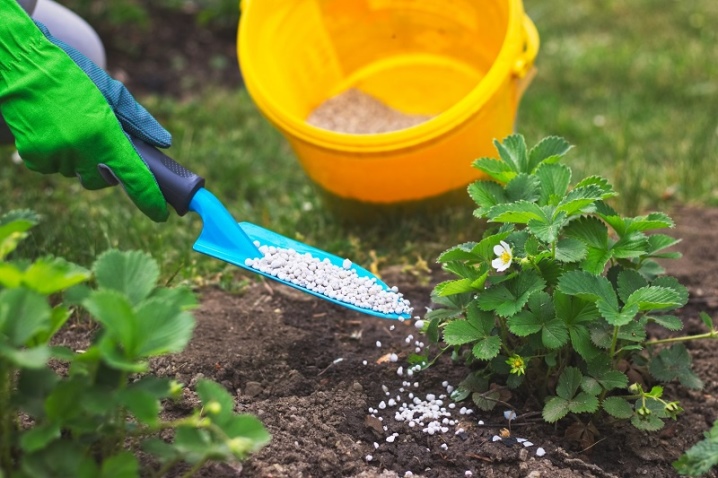
The main reasons for chopping berries
Strawberries should have beautiful and juicy fruits that make a good impression. This is what even those gardeners who do not sell the crop, but eat it themselves, strive to achieve. But sometimes the selection of varieties, watering, the choice of a place on the site does not lead to success. Then you have to take urgent measures, and first you have to figure out what the reason is. Often the reason that the berries have become small, gnarled and ugly is growing the plant for too long.
An annual strawberry usually pleases its owners and does not cause them upset.... But an attempt to breed her in the second year threatens with just serious problems. Plants tending towards their decline, by definition, cannot produce a decent harvest. Conclusion: despite the great laboriousness, it is more correct to plant this crop from scratch more often. Then it will be nice to look into the plate.
However, vegetative degeneration is not the only reason why bushes produce many small berries. Other harmful factors that make gardeners regret their failure cannot be discounted. The simplest version is lack of water or food. Therefore, those farmers who regularly and correctly water strawberries are less likely to face such a problem.
It is not difficult to recognize the lack of watering - at the same time, the shoots also dry and the flowers wither, the ovaries form worse; foliage also has a withered appearance.
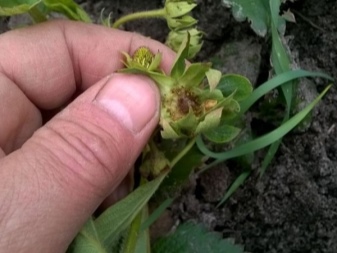
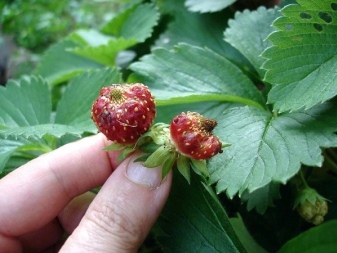
But even if the irrigation is organized correctly, problems are still possible.... This is a situation where the soil lacks nutrients. Top dressing of garden strawberries should be carried out not only at the beginning of the season (before planting), but also during the growing season. The needs of the crop for nutrients are great, and it will intensively pick them from the soil. The more productive the variety, the greater its need for special nutrition.
The appearance of small berries in young strawberries can inform not only about problems with feeding "in general"; sometimes it speaks, for example, of boron deficiency. In this case, deformed fruits are formed - deformed so much that there is no doubt. It is worth noting that a similar situation sometimes occurs when the planting is too dense. Then neighboring plants simply interfere with each other and break themselves upon contact, and they take away many useful substances mutually.
Chronic violation of agricultural standards sometimes provokes even more serious defects. In this case, culture sometimes degenerates altogether. Then you cannot count on large bushes and juicy tasty berries of the correct shape. Sometimes no effort can be made to restore the normal state of affairs.
Therefore, attentive and responsible gardeners necessarily study in advance the planting schemes, and then do not abandon them arbitrarily on a whim.
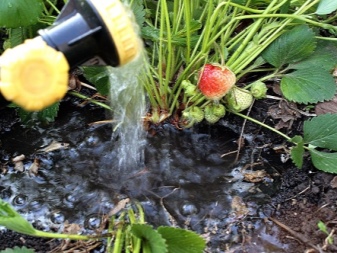
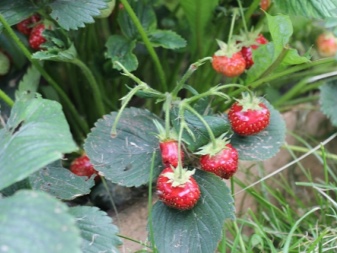
Returning to the age problem, it is worth pointing out that small, dry and uneven berries appear at the age of 5-7 years. It is impossible to say more precisely, because the variety and quality of the soil, the parameters of cultivation play an important role here. The way out of the vicious circle is the rejuvenation of the landings.There is no need to do this at the same time, because new landings are divided into two subtypes. In one case, time-tested varieties are used, and in the other, experiments are carried out with new varieties.
However, even good soil and proper agricultural technology of the strawberries themselves do not mean that the problem of small berries will bypass the garden. Often it is also associated with the contamination of the earth by extraneous plants. Harmful plants have a very large leaf, throw out a lot of whiskers, however, they themselves do not produce berries. The flowers are either completely absent, or very dull and faded. It is possible to recognize the threat even in the spring, it can be eliminated in the only way - to ruthlessly uproot the wrong specimens, preventing them from displacing the useful culture.
Finally, the chopping of the crop can also be provoked by attacks of harmful insects or infection with infections. It is useful to carry out treatments in a preventive mode. The bushes are examined regularly, at least once every 2-3 days. This will make it possible to detect even the earliest manifestations of pathologies and insect invasions that take away strength from plants.
Nevertheless, it is recommended to pay special attention to the problem of strawberry nutrition, and not to other causes of its disorders.
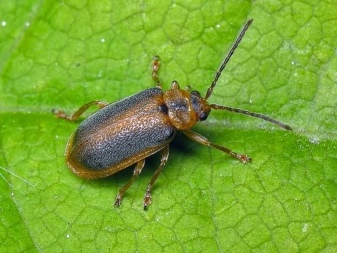
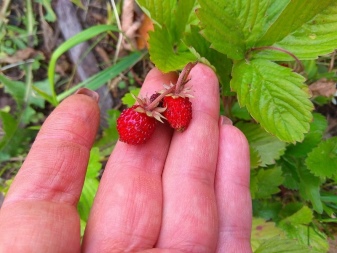
Fertilizer overview
Mineral
For large berries, it is useful to use carbamide (known to many summer residents as urea). It has the same function as liquid manure, but much more hygienic. Simple superphosphate is used to force root formation and fold flower buds. It is taken in the spring and added again when the crop is harvested. It is worth noting that the same fertilizer is used so that there are chances of preserving the crop in winter and in the off-season.
Ammophos can serve as a replacement for the two previous compositions. It is used in the same way twice: at the beginning of the growing season and after the completion of harvesting. Experts also speak positively about potassium sulfate. Thanks to him:
-
folding of buds, setting of flowers and formation of fruits is activated;
-
the berries will be sweeter;
-
immunity is activated and resistance to pathologies increases.
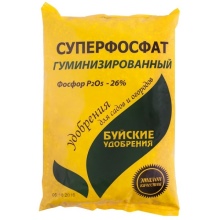
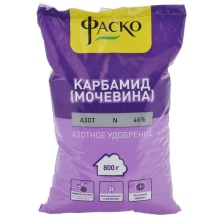
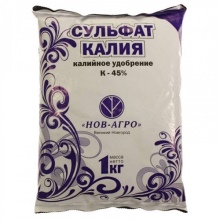
Organic
Watering or otherwise feeding the strawberries with organic matter when the plant bears fruit is quite reasonable... Such compositions are relatively safe... In addition, they are cheap and may be more readily available than factory mixes. Very good results can be obtained by using litter of chickens. Since it contains a lot of nitrogen, you will have to dilute the fertilizer with water.
You have to wait 180 minutes after watering. Even the diluted mixture should not get on the foliage and roots. It is poured strictly in the aisles, and not at the root. The recommended dilution ratio is 20 parts of liquid to 1 part of dry matter. The infusion time is 240 hours, while the container must be open.
A good alternative can be considered wood ash. It is used both in a pure state and as a solution. Put about 50 g of the substance on 1 bush. The dry mass is used immediately before irrigation or on the eve of rain. Also, some gardeners prefer to dilute 1 share of ash with 10 parts of clean hot water.
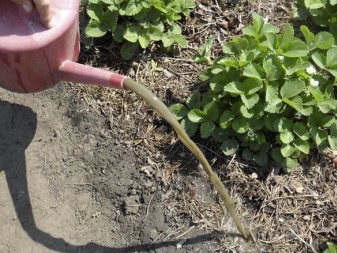
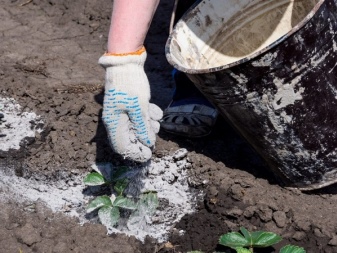
What folk remedies to feed?
To enlarge the fruit, you need to work in the spring. Business begins with a visual inspection of the bushes and an assessment of their condition. Instead of pure natural fertilizers, organic-mineral compounds can be used. When choosing top dressing, you need to make sure that they are allowed to process the plant at the same time. However, the compatibility of dressings is a topic for a separate conversation.
The first processing of the year can be done:
-
10% mullein solution;
-
12 times diluted chicken droppings;
-
simple ripe compost, which is laid in a circle, avoiding sprinkling of the rosette neck.
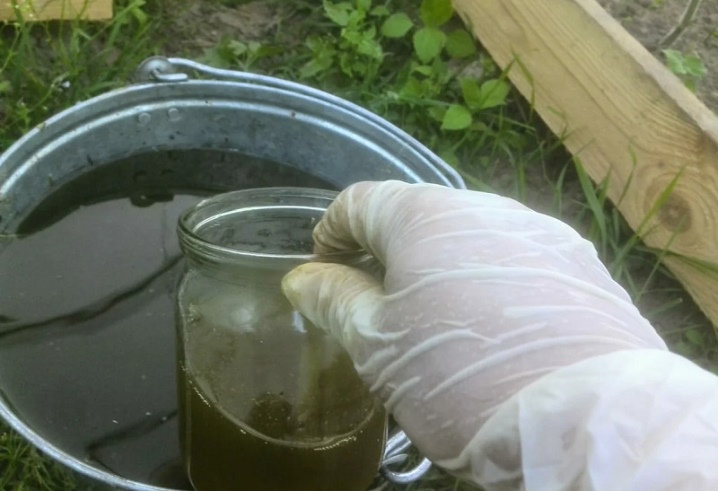
Boron supplementation plays an important role in the successful development of strawberries. At the time of the extension of the peduncles, 10 liters of water are diluted:
-
boric chelate (25 - 30 g);
-
pharmacy iodine solution (5 g);
-
milk whey (1 kg).
But feeding should be done after the end of the main harvest. In the second half of June, garden strawberries can still delight farmers and summer residents with delicious berries. The necessary parameters can be provided by adding potassium and trace elements. For example, a 1% solution of wood ash has gained popularity. About 500 ml of such a solution should be poured onto 1 plant; after 2 weeks, the same treatment is duplicated.
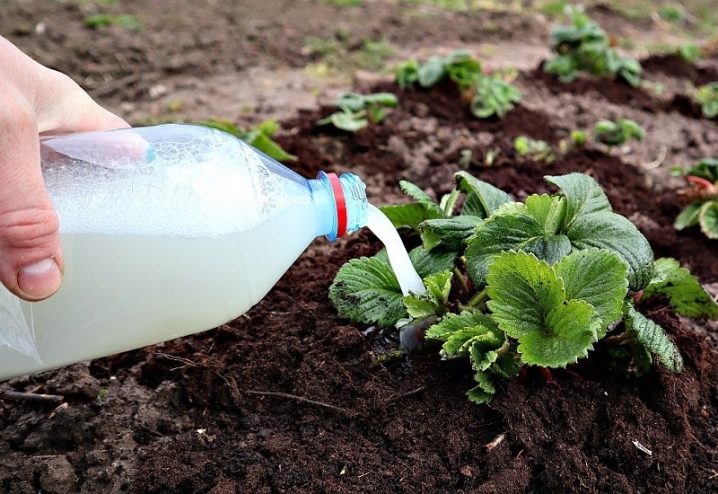
Top dressing tips
If in doubt which plants should be fed first, then the main attention will have to be paid to those that are bearing fruit at the moment. We are talking about specimens living for 2-4 years. The initial top dressing takes place immediately after the snow melts, as soon as the soil dries up. Kneading the dirt and over-compacting the soil around the bush is not a good idea. The main component at this moment is nitrogen, and nothing can replace it.
The best early nitrogen fertilization is cow manure, which has time to sprout. The substance will have to be diluted with water. 2-3 kg of top dressing is diluted in 10 liters of water. The solution is used at 1000 - 1200 ml per bush. Poultry fertilizer is also used, however, with great care.
When flowering and folding the ovaries, it is necessary to use foliar boron supplements (according to the foliage). 2 g of boric acid is placed in a 10 liter bucket. Warm or even hot water is poured there. Sometimes it is more correct to dilute the reagent in a small mass of hot water, and then pour it into the main container.
Leaves and flowers should be wetted abundantly.
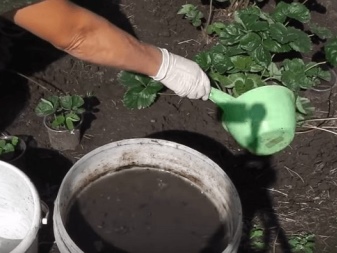
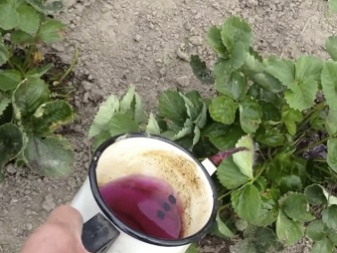
You can find out how to feed strawberries so that the berries are large until the end of the season from the video below.













The comment was sent successfully.